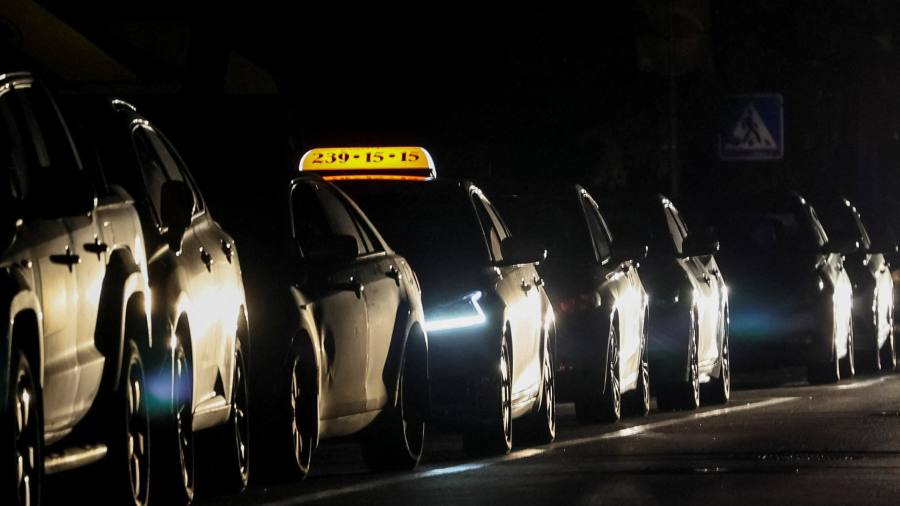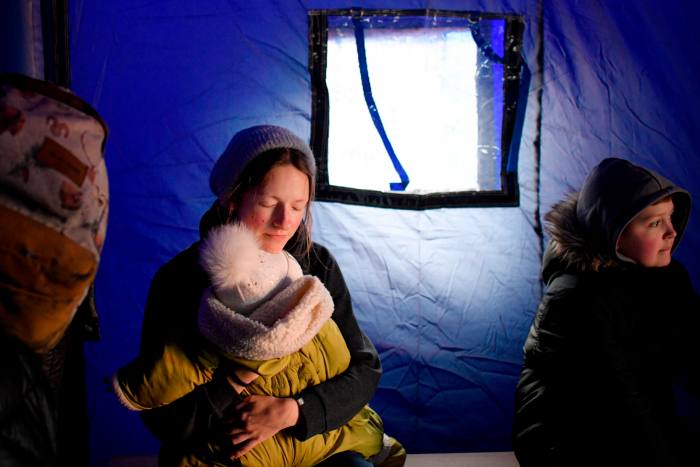
The EU is stepping up planning for a possible increase in the number of refugees fleeing Ukraine this winter amid rising fears that Russia’s destruction of power infrastructure could force more people to leave.
Ukrainian president Volodymyr Zelenskyy warned EU leaders during a summit on Thursday night that Russia is trying to provoke a “wave of resettlement” to the EU by cutting off electricity and heat this winter.
“Russian terror against our energy facilities is aimed at creating as many problems as possible with electricity and heat for Ukraine this fall and winter so that as many Ukrainians as possible move to your countries,” he said.
“The terrorist state has already worsened the social conditions in your countries — but it wants to worsen it further by provoking a wave of resettlement.”
A week of Russian aerial bombardment that began on October 10 has destroyed 30 per cent of Ukraine’s power generation capacity, Zelenskyy said on Tuesday. As a result, Kyiv and other large cities are subject to rolling power blackouts, and parts of the capital have experienced interruptions to water supplies.

The European Commission is updating its emergency migration contingency measures in response to the shifting nature of the Russian assault, including potential escalation scenarios on the bloc’s eastern border this winter, an EU official said.
Commission officials are relatively confident that they are prepared for a potential surge in refugees, the official said, adding that it was also taking steps to increase Ukraine’s ability to cater for people left homeless or cut off from the power grid.
EU leaders are set to agree for the bloc to “step up its humanitarian response [to Ukraine], in particular for winter preparedness”, according to a draft of conclusions to be published after the EU summit concludes on Friday.
Poland has sent the commission a list of urgent infrastructure needs drawn up in conjunction with Kyiv to patch up the power plants and infrastructure destroyed by Moscow’s aerial assault spearheaded by Iranian “kamikaze” drones.
The itemised list of equipment, which Warsaw has called on Brussels to help source and provide, includes everything from circuit breakers to transformers, cables and diesel generators.
“The priorities for us today are the supply of equipment to Ukraine that are desperately needed after the bombardment of the past weeks,” said one Polish official involved in the talks with the commission.
“They need this extremely . . . their needs are desperate. They don’t have generators for hospitals,” the official added. “The situation is getting worse each day.”
The EU has already been co-ordinating equipment donations by member states as requests come in from Ukraine, and the commission is hoping to encourage more donations of power equipment from private companies.
But Zelenskyy said the EU needed to funnel extra funding to efforts to rebuild infrastructure quickly. Member states should rally behind Kyiv’s “fast recovery plan” for rebuilding after the Russian destruction of infrastructure, he told EU leaders, adding that his country needed to raise more than €17bn to execute the plan.
The EU has struggled to deliver on its pledges of financial support for Ukraine this year, with a promise of €9bn of funding still only partially delivered. The commission is drawing up a plan for a more reliable stream of financing to Kyiv next year, as it targets up to €18bn over the whole of 2023.
Arriving at the summit, Estonian prime minister Kaja Kallas warned of the risk of a “very big migration pressure on the European Union” after countries had already taken in millions of refugees.
“We have to find a solution that will help Ukraine to build up their infrastructure and protect [it],” she said, adding that Nato allies need to ensure the country has enough air defences to ensure Ukraine can do so.